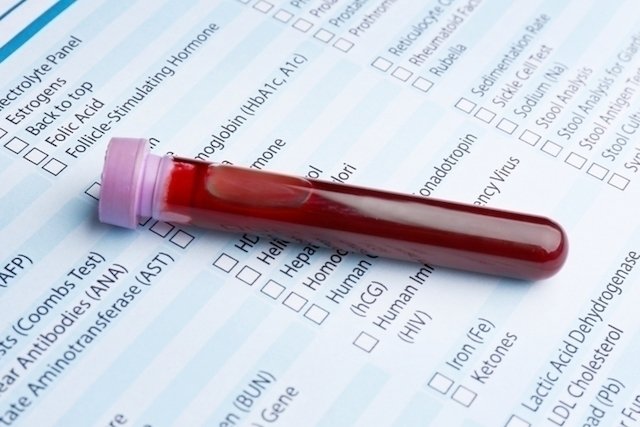Cholesterol is a type of fat that is essential for the proper functioning of the body. When cholesterol levels in the blood are high, it can increase your risk for a cardiovascular problem like an infarct or stroke.
Cholesterol levels should be interpreted by your doctor, as a high or low cholesterol and whether this is beneficial depends on the type of cholesterol being tested. High HDL levels, for example, are considered to be beneficial, while high LDL levels are not conducive to heart health.
Therefore, if your total cholesterol is high, but your HDL cholesterol levels are higher than the recommended reference values, this usually doesn't indicate a high risk of disease, as the excess cholesterol will be eliminated by the liver. However, if total cholesterol is high but LDL is higher than the reference value, the excess cholesterol will be stored in the cells and veins instead of being eliminated, increasing the risk of cardiovascular problems.

Learn more about what each type of cholesterol means:
1. HDL cholesterol
HDL cholesterol is known as “good” cholesterol, as it is able to protect the heart from damage caused by LDL. It is the only type that should be kept at high levels in the blood. HDL is produced by the body and is fundamental for proper functioning, therefore it is a good idea to maintain it above 40 mg/dl, and even better to keep levels above 60 mg/dl.
When levels of HDL fall below 40 mg/dl, it is important to monitor it, because LDL or triglycerides may became elevated, which puts you at a higher risk for developing cardiovascular disease.
How to increase it: To increase HDL cholesterol levels, you should maintain a varied and healthy diet and perform regular exercise. In addition, it is important to avoid things like smoking or consuming excess alcohol.
2. LDL cholesterol
LDL cholesterol is the “bad” cholesterol and is considered to be high in most people when it is equal to or above 130 mg/dL. In some cases, more rigid control measures are necessary to control levels, especially in people who have a history of cardiovascular disease, or in people with risk factors like smoking, obesity or a sedentary lifestyle.
When LDL cholesterol is high, fat will start to deposit on blood vessel walls, which lead to plaque formation. Over time, blood circulation can become compromised, which can lead to a heart attack or stroke.
How to reduce it: To decrease LDL cholesterol levels, you should follow a diet that is low in sugar and fat, as well as participate in physical activity at least 3 times per week. If these changes alone are not sufficient, the doctor can recommend the use of medication to manage levels.
Maximum recommended levels of LDL cholesterol
LDL levels should be kept as low as possible, and therefore the majority of the population should keep their LDL below 130 mg/dl. People at a high risk for cardiovascular disease should keep their levels even lower.
The follow table shows the recommended maximum level of LDL cholesterol in different populations of people:
Cardiovascular risk should be calculated by the cardiologist through clinical assessment and testing. Normally, people with a sedentary lifestyle and an unhealthy diet, who are obese and have other risk factors like smoking or alcohol abuse have a high risk for cardiovascular disease. These people should aim to keep their LDL levels low.
Another, more simple way of calculating cardiovascular disease risk is by measuring waist circumference. Although this method can be done at home to assess risk, you should still follow-up with a cardiologist, as his or her assessment will be much more thorough.
3. VLDL cholesterol
CLDL cholesterol is responsible for the transport of triglycerides, and can also increase the risk for cardiac disease. The ideal level of VLDL is up to 30 mg/dl, and is considered to be high when it is above 40 mg/dl. If your level is within these two values, this is considered to be a normal exam, although it is not ideal because your risk for cardiovascular disease can increase.
VLDL levels are not considered to be relevant in some medical communities
4. Total cholesterol
Total cholesterol is the sum of HDL, LDL and VLDL. A high total cholesterol represents a high risk for cardiovascular disease, and therefore levels should not exceed 190 mg/dl.
Total cholesterol that is over de 190 is less concerning of LDL levels are normal. However, you should still be careful with your diet, and aim to avoid food that is high in fat content so that your cholesterol does not become any higher and affect your health negatively.
